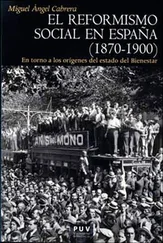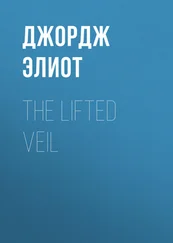1 ...7 8 9 11 12 13 ...25 In any case, it is my conviction that apprehending Barber’s work in its fullness demands a developed understanding of the history of The Church of Jesus Christ of Latter-day Saints. Some of her stories are rooted very deep; rooted in a soil that has been harvested for two centuries. Some others are placed in urban spaces and they only reach a few days back from yesterday, but they always ascertain a set of connections that transcend the single moment and specific locale. That is the main reason behind my intention to give a recapitulation of Mormon history and literature before beginning my analysis of her books. Thus, readers will be equipped with the necessary context from which both Barber’s literature and my own analysis proceed.
There is a second reason that I feel it is mandatory to offer this historical and literary overview. In short, it is prudent to assume that not everybody knows that Mormon literature exists. Since the late 1970s when the initiation of the first Mormon college classes and the publishing of the first Mormon anthologies signaled the beginning of a flourishing interest in Mormon literature from an academic perspective, Mormon literature has observed a growth that provides an interesting route to understand its complicated existence today. Mormon criticism is still studying the limits and concerns of both the criticism and the literature. It is my aim to study this process and to show that critical attention is given to Mormon literature.
Furthermore, I want to contribute to this visibility through a panoptic approach which posits a complex definition of Mormon literature. In my treatment of Mormonism and Mormon literature I will exhibit a preference for a multiplicity of points of view, unpretentious criticism and an inclination to pose questions rather than make statements. I believe this to be the proper way for an outsider to approach a different culture. In any case, the aim remains the same: to give visibility to a body of work that, as I will try to show, has been long denied the attention it deserves.
Mormonism has gone global and international, and this movement began long before Mitt Romney became the first Mormon to be a major party presidential nominee. In the second half of the 20 thcentury, the Mormon Church has supported and encouraged the establishment of missions and wards all over the world. Today, the Church acknowledges a total number of almost 14.5 million members. These members are distributed in 28,784 congregations worldwide. The Church has 340 established missions and 140 temples around the world. Some of these temples have been built in places as diverse as Germany, Spain, Mexico, Brazil, Panama, Colombia, Sweden, Argentina, Canada, China, Philippines, Nigeria and Denmark, to name but a few. 2Still, prejudices abound and ignorance fosters stereotypes. An unveiling of Mormonism therefore requires an accurate mapping of its background. Mormon history articulates the very fabric of Mormon identity. When approaching Mormons as a tight group—as a community—the researcher easily perceives the importance of history for the construction and continuation of that bond. Likewise, the history of Mormonism is fundamental to the individual and personal design of any Mormon’s place in the world. In America: Religions and Religion , Albanese summarizes all this into one simple sentence: “To understand the Mormons is to understand this history in which they acted out their identity” (226). Therefore, if I want to offer a proper background to my analysis, I need to explore not only contemporary Mormonism, but I also need to walk backwards and track its history.
In conclusion, before I begin to pose my analysis of Phyllis Barber’s literature, it is necessary to approach both Mormon history and literature in order to provide a proper frame within which to understand her books. Levi S. Peterson explains that “if it is written well, history can function as potently as either fiction or drama to capture our imagination, to arouse our emotions, to cause us to identify and project and to live vicariously in the scene portrayed by the historian” ( Juanita 135). By contrast, Linda Sillitoe affirms that fiction can be more resolute than history in achieving its natural aim: “Sometimes a deeper, subtler truth can be told in fiction” ( Off 12). The combination of these two different positions supports my perception that offering introductions to the history of Mormonism and to Mormon literature proves valuable insofar as it guarantees a better understanding of my subsequent analysis of Barber’s literature. Besides, these introductions, as I have already stated, function as an invitation to come closer to a culture that offers a different approach to the American West, and to discover new challenges that could even rearrange our own personal definitions.
Genealogy and Memory:
How to Shape a Communal Identity
The history of Mormonism is a story of movement and constant progress, an evolution of a community through events and circumstances that have drawn the path to the present-day consideration of Mormonism as a spiritual and cultural group. Indeed, it almost verges into an ethnic category. When Candadai Seshachari tries to explain the nature of the duty of a Mormon writer, he is compelled to explain that the Mormon writer finds in the historical past of his or her ancestors a weight equivalent to that which an African American might feel toward the history of slavery (Seshachari 23).
Whether I am here talking about writers, mathematicians or plumbers, to say that Mormons look back to their history in order to find a place for themselves is an obvious assertion. And as soon as the obvious comes into play, so does the risk of bending it for the sake of simplicity. Such a clear statement may invite us to sacrifice the complexity of the history of the Church of Jesus Christ of Latter-day Saints when, in fact, it is necessary to approach any single event of its history with an eye open to different approaches, perspectives, and levels of interpretation. There is no better example to understand this complexity than by paying attention to an even more obvious statement: that almost the entire history of the Mormons took place in the American West; an American West that, as Neil Campbell emphasizes, became “a particular focal site for the inscription of national identity” and a “primary mythic vehicle” ( Rhizomatic 152). Mormons, as part of the historical, but also mythical, enterprise that led to the settling of the American West, were engaged in that same frontier-search for definition and transcendence. To gain understanding of their sense of community and their quasi-ethnic perception, it is indispensable to study the myths upon which their agreement is erected. As Stacy Burton has suggested, the pioneering days—a cardinal point in Mormon history—are fundamental for understanding this mythical nuance: “Mormons have long revered early adherents to the faith, particularly the pioneers who crossed the plains to Utah. But what began as reverence gradually became mythologizing and then sacralizing” (Burton, Toward 32).
This process of “mythologizing and then sacralizing” has its explanation in the Mormon tendency to look backwards in search of a sense of community. Probably, that bent towards memory and tradition stems from Mormonism’s reaction against the growing secularization of its surroundings. As Anthony D. Smith explains in Myths and Memories of the Nation , “the myths represent a means of adapting to rapid change, of mediating between an untenable but much-regretted religious tradition and an ardently-sought but often fearful social change and modernization” ( Myths 84). Smith adds that these myths also reflect the “hopes and possibilities” ( Myths 84) placed upon a change produced by the move into a new industrial, capitalist and modern society, a “modern era where traditional economy of isolation and subsistence is finished” ( Myths 84). Or as Richard Slotkin puts it, “myth-making is simultaneously a psychological and a social activity. The myth is articulated by individual artists and has its effect on the mind of each individual participant, but its function is to reconcile and unite these individualities to a collective identity” (Slotkin, Regeneration 8). The Mormon’s growing “mythologizing and then sacralizing” of the pioneer days does—with some variation and change of emphasis—fit into this picture.
Читать дальше












